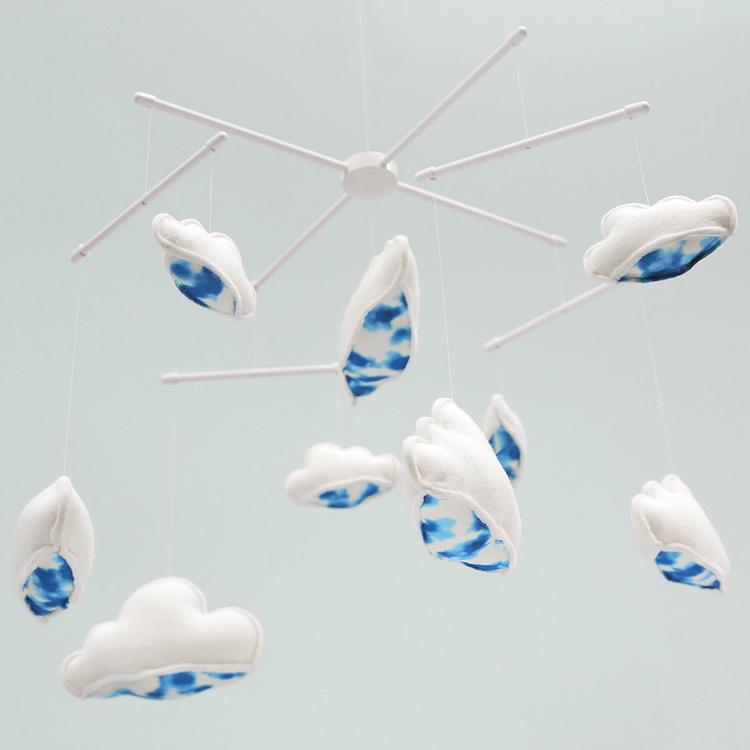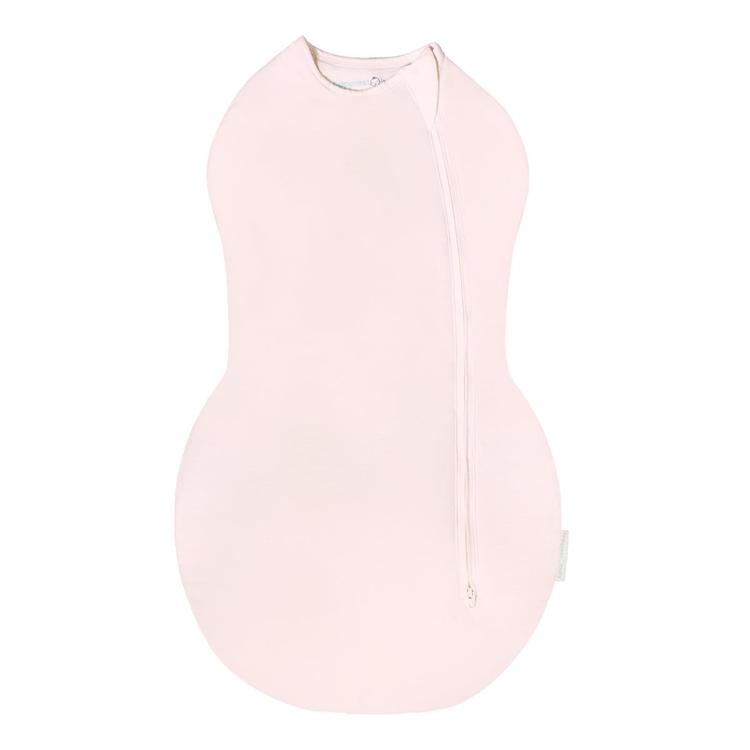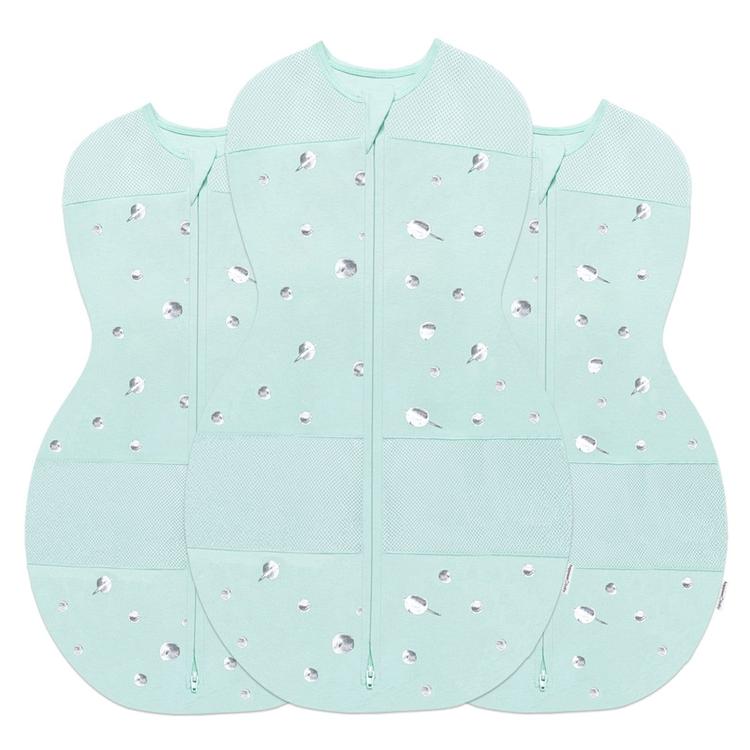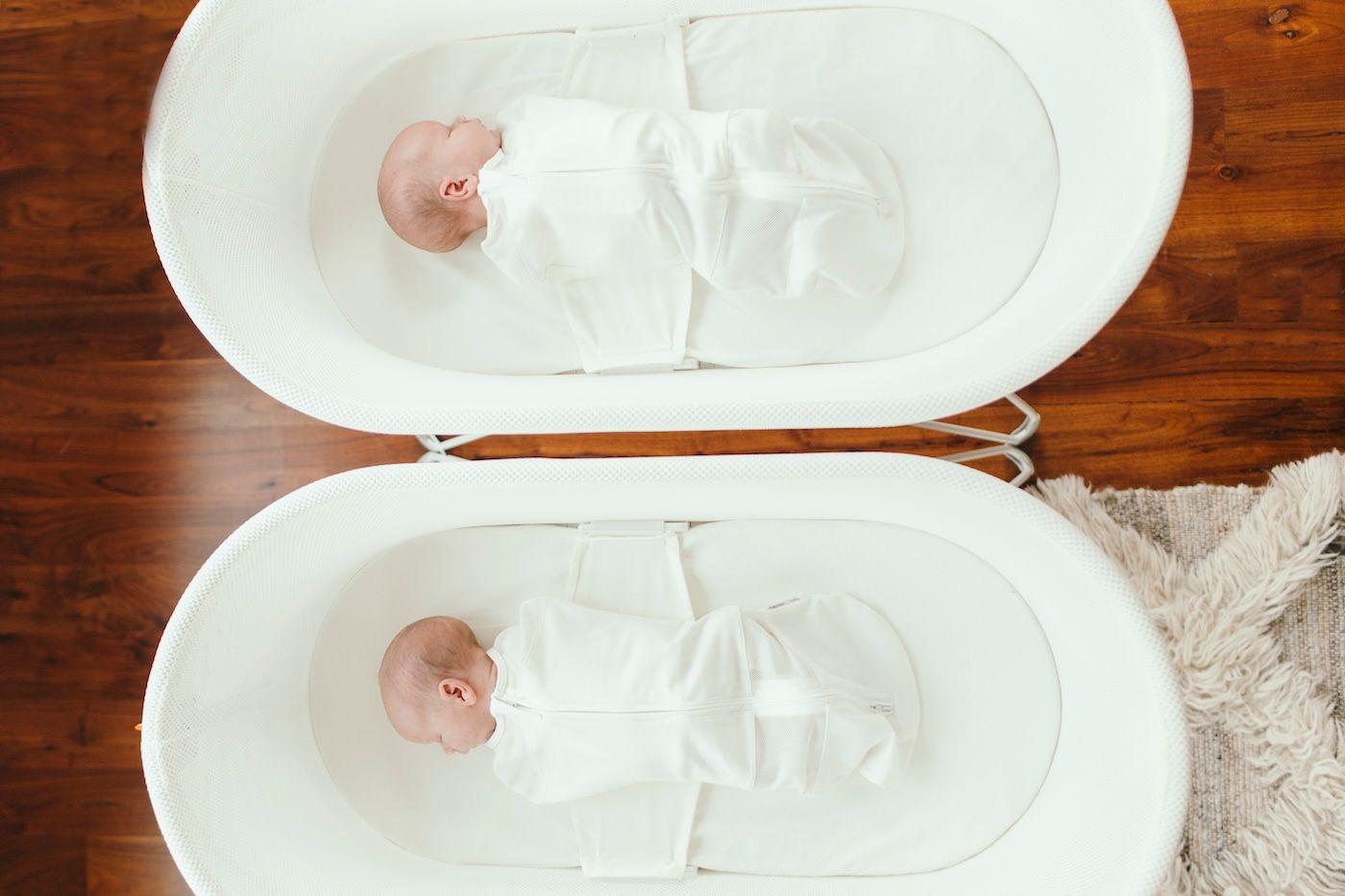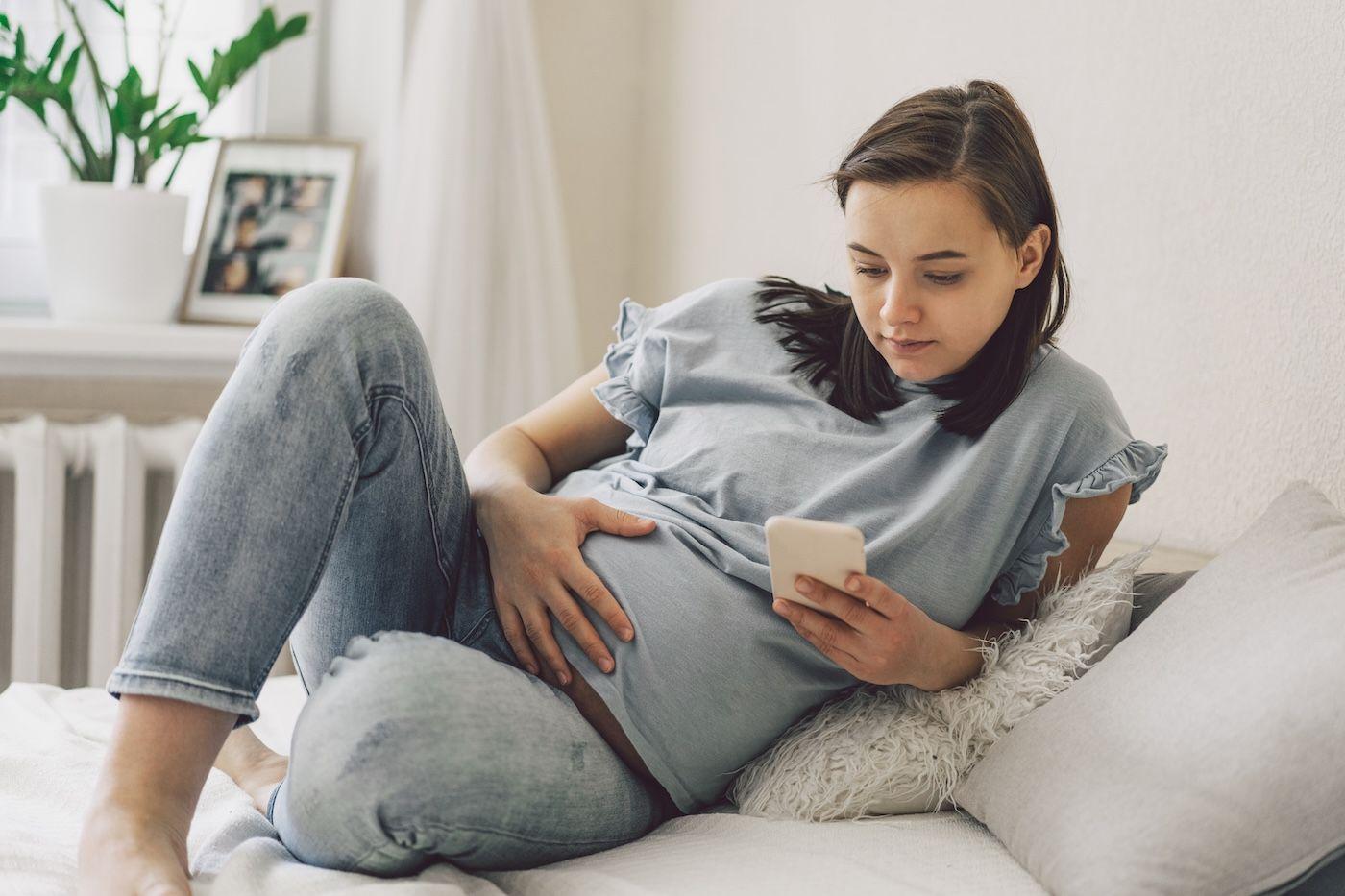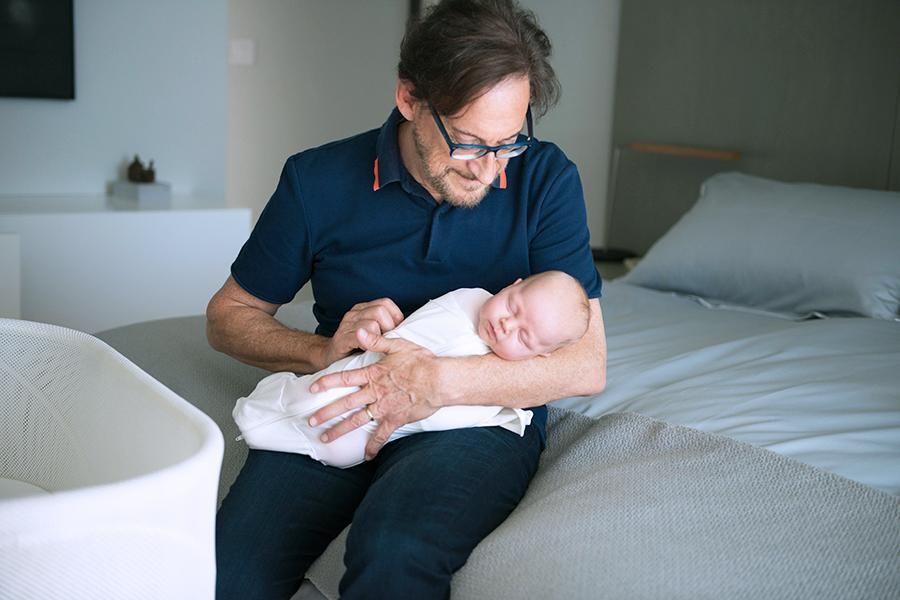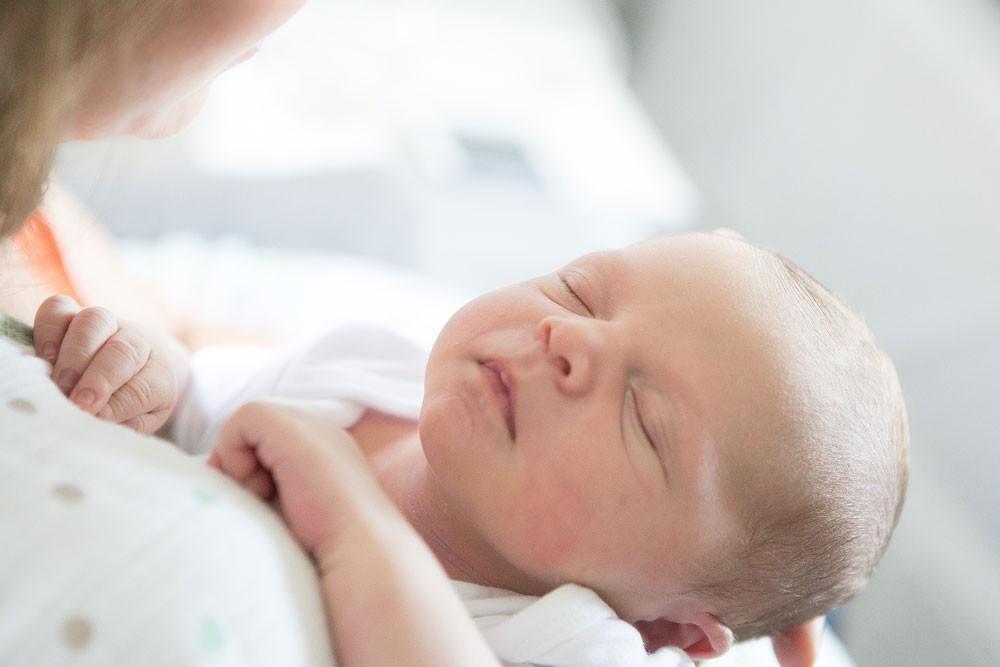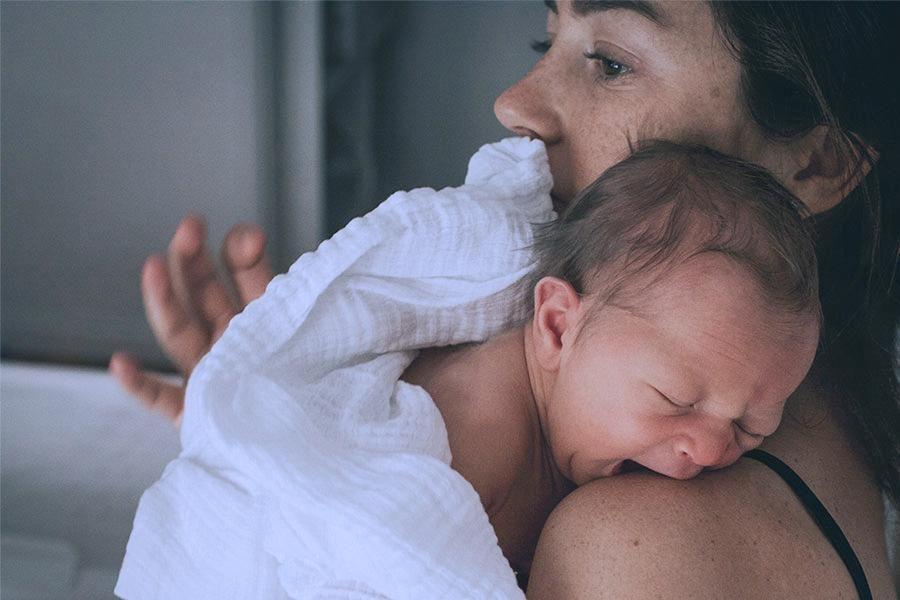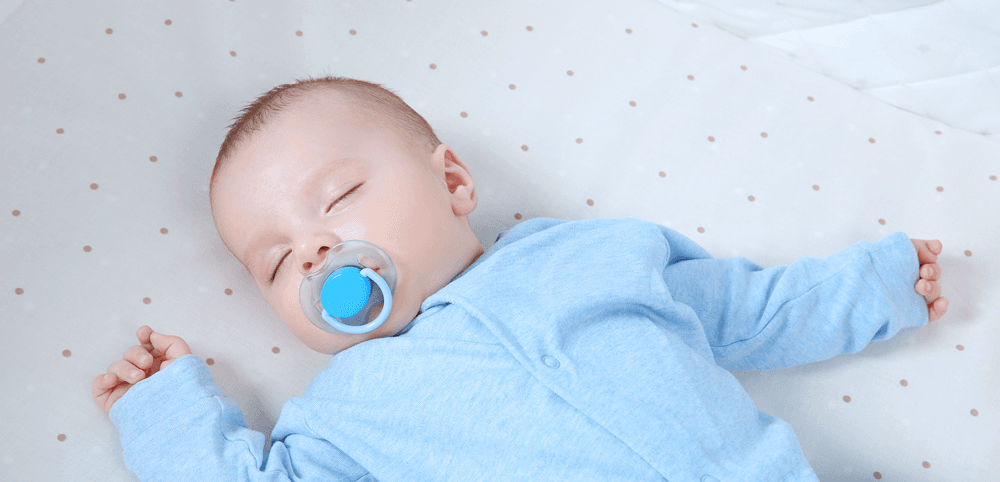At 28 weeks pregnant, you are entering your third trimester, which—drumroll please—means you are in the home stretch of your pregnancy! As the excitement and anticipation builds over these last 12 weeks of pregnancy, so can uncomfortable pregnancy symptoms. In fact, many experts note that third trimester symptoms are often the “most painful” of all the pregnancy symptoms! That is because your almost-cooked baby is getting bigger and bigger, increasing the stress on your body. But there is absolutely no need to panic! Instead, read up on all the ways your body changes during the third trimester, what risks and symptoms peak in the third trimester, and how to feel your best as you sprint waddle to the finish line.
When does the third trimester start?
Most providers agree that the third trimester starts at 28 weeks of pregnancy and extends until you give birth, which is usually between 39 and 40 weeks of pregnancy. There are 12 weeks in the third trimester.
Third Trimester Symptom: Swollen Feet and Ankles
Pregnancy swelling, aka oedema, tends to kick in around week 30 of your third trimester and worsen as your due date nears, particularly at the end of the day and during hotter weather. (Research shows that 67% of mums-to-be have oedema in their third trimester.) Swelling gets worse in the third trimester because you are churning out more of the hormones that cause fluid retention and you have about 60% more blood circulating than you did pre-pregnancy. Not helping matters is the fact that your expanding uterus is now putting an extraordinary amount of pressure on the large vein that returns all that blood to your heart called the inferior vena cava. The result: Fluid accumulates in your body leaving you swollen, especially your legs, ankles, and feet.
How to Treat Third Trimester Swelling
Getting off your feet as much as you can is, by far, the best thing you can do for pregnancy swelling. Aim to sit down and elevate every couple hours for 10 minutes—and especially a few hours before bed. Prop your feet on a few pillows while you are at it. This will help gravity do its job and pull fluid from your legs back into your circulatory system. Warning: All that fluid will be filtered through your kidneys, which means you will be peeing it all out! That is why you should not wait till bedtime to start elevating. For more help easing your third trimester swelling…
- Wear compression stockings.
- Avoid crossing your legs.
- Sleep on your left side to take pressure off the inferior vena cava.
- Stand or walk in a pool up to your neck to help compress tissues in the legs.
- Exercise regularly.
- Stay cool in hot or humid weather.
- Wear loose clothing so as not to restrict blood flow.
Should I see a healthcare provider about third trimester swelling?
While mild pregnancy swelling in your feet and ankles is perfectly normal, if the swelling comes on quickly and is painful—especially if only one leg is impacted—you could be experiencing deep vein thrombosis (aka: a blood clot) and need prompt medical attention. A sudden increase in swelling might mean your blood pressure is higher than normal. That, too, requires a health care provider’s attention.
Third Trimester Symptom: Insomnia
By the third trimester, that ever expanding bump of yours can make it particularly tricky to find a comfortable sleeping position. You are also at an elevated risk for nighttime leg cramps during your third trimester which is not conducive to a restful night. Plus, that extra estrogen coursing through your body can cause some parents-to-be to develop rhinitis (swelling of the nasal tissue), which is associated with sleep problems. So, it is no surprise that at least 42% of expectant mums report experiencing insomnia in their third trimester. (Some reports put the number closer to 80% suffering from third trimester insomnia.)
How to Treat Third Trimester Insomnia
Pregnant or not, we all know that proper sleep hygiene is key to a good night’s rest. That means go to bed and wake up at the same time every day, keep your room dark and free of distractions, and turn off all electronics about 30 to 60 minutes before lights out. (No more revenge bedtime procrastination!) The Sleep Foundation notes that meditation and playing white noise may help lull you to sleep in your third trimester, too. (PS: SNOObie is a doctor-designed white noise machine and a mediation-helper all in one.)
More ways to help third trimester insomnia:
- Sleep on your left side, knees bent, with a pillow under your belly (or between your legs) and a rolled-up blanket at the small of your back.
- Keep your bedroom between 20 and 22.2 degrees Celsius to accommodate your warmer body temperature.
- If you cannot sleep within 30 minutes of going to bed, get up and do a non-screen activity like reading a book.
- Drink 6 to 8 glasses of 200 ml of water a day to help stave off nighttime leg cramps. (Avoid liquids about two hours before lights out to keep overnight peeing to a minimum.)
- Consider speaking to a therapist about cognitive behavioral therapy (CBT). Research has shown that CBT, whether in person or online, can reduce insomnia during pregnancy—and may help prevent postnatal depression and reduce insomnia and anxiety in new parents up to six months after they give birth.
Should I see a healthcare provider about third trimester insomnia?
If your pregnancy sleep issues are chipping away at your ability to function during the day, do not hesitate to reach out to your healthcare provider who can refer you to see a therapist for CBT. Experiencing insomnia during pregnancy your third trimester does not just make you crabby, it is associated with a 30% increased risk of preterm birth, plus a host of other issues, including preeclampsia, extended labour, and increased likelihood of a cesarean section. While treating insomnia during pregnancy with medication is often not advised (not even melatonin!), your provider may suggest extra folate or calcium, or perhaps the medications zopiclone or trazodone (aka Imovane and Molipaxin). A 2020 report noted that the use of either of these sleep medications “may be justified.”
Third Trimester Symptom: Heartburn and Reflux
A whopping 90% of pregnant folks develop symptoms of gastro-oesophageal reflux by their third trimester. GORD most often results in heartburn, but it can sometimes lead to nausea and vomiting, too. Reflux is yet another third trimester symptom that you can at least partially pin on your growing uterus. This time it is pushing up on your stomach, leaving less room for food. Another culprit: An uptick in the pregnancy hormone progesterone can cause the muscle between your stomach and oesophagus to relax too much, allowing stomach acid to flow in the wrong direction.
How to Treat Third Trimester Heartburn and Reflux
The best treatment for third trimester heartburn and GORD is prevention. To help sidestep this uncomfortable late pregnancy symptom, eat five small meals a day instead of three larger ones—and eat slowly. Drink water between meals, not during meals. Limit fried, spicy, and acidic foods. It is smart to stop eating about two to three hours before going to bed. This will give food time to leave your stomach before you lay down. Elevating your head has been shown to help avoid nighttime reflux. If you missed your window of prevention, try eating yoghurt, stirring a tablespoon of honey into warm milk to drink, and/or chewing gum to help tamp down you third trimester heartburn.
Should I see a healthcare provider about third trimester heartburn and GORD?
If you are considering taking over-the-counter heartburn relievers, like Gaviscon, you should connect with your healthcare provider first. Reach out if you are already taking a nonprescription heartburn helper, but it is not working—and/or if your reflux does not appear to be related to something you ate. Both of these things may point to something more serious, such as pre-eclampsia.
Third Trimester Symptom: Back Pain
Up to 70% of women experience pregnancy back pain, and 74% of pregnancy back pain occurs in the third trimester, which is no surprise to paediatrician Dr. Harvey Karp, author of The Happiest Baby on The Block. “Starting around 30 weeks in your third trimester, your baby may start putting serious pressure on your lower back,” he says. “To accommodate the extra weight you are carrying around, your amazing body will make several adjustments. For example, your spine will curve more, which shifts your centre of gravity to prevent you from toppling over.” The catch? That centre-of-gravity shift may cause you to lean more to one side or another, which then may lead to even more lower back or hip pain.
How to Treat Third Trimester Back Pain
While there is not much you can do about your growing baby or the pregnancy hormones, there are steps you can take to ease your third trimester back pain, such as:
- Wear a pregnancy support band to take some weight off your hips and back.
- Place pillows under your hips when you sit.
- Take a bath to help relieve back pain but keep the water temp around 37 degrees Celsius.
- Use a heating pad on your hips or back to loosen muscles.
- Stretch your lower back by resting on your hands and knees with your head in line with your back. Pull in your tummy while slightly rounding your back. Hold for several seconds then relax, keeping your back as flat as possible. Over time, work up to 10 repetitions. (More on pregnancy-safe exercises for the third trimester.)
Should I see a healthcare provider about third trimester back pain?
If your third trimester back pain lasts more than two weeks, it is a good idea to call your healthcare provider. They might recommend paracetamol or other treatments or refer you to a specialist. “A physiotherapist or pelvic floor specialist can recommend exercises, like pelvic tilts and cat/cow pose, to help,” says Dr. Karp. “That said, anytime your back or tailbone pain is severe, talk to your doctor.” And if your back pain is accompanied by vaginal bleeding, fever, cramping, contractions, or a burning while you pee, call your healthcare provider immediately. These could be signs of a urinary tract infection or preterm labour.
Third Trimester Symptom: Cramping
Don’t freak out! Experts assure that third trimester cramps are normal. Cramps at this stage in pregnancy could simply mean your body is making more room to accommodate your baby-to-be. At the same time, late pregnancy cramps may be indicative of Braxton Hicks contractions— which is false labour—or honest-to-goodness labour! (Learn more early labour signs.) Experts note that Braxton Hicks cramps are more likely to occur in the afternoon or evening, after physical activity or sex. While round ligament pain is often the cause of an achy, crampy abdominal and groin pain, know that this type of cramping is usually not behind your late pregnancy cramp. (Round ligament pain peaks during the end of the first trimester and in the second trimester.)
How to Treat Third Trimester Cramping
Before you move to treating your late pregnancy cramps, you will need to decipher if you are experiencing Braxton Hicks or true labour. Unlike cramps associated with true labour that get stronger, more intense, and more painful, Braxton Hicks feels like period cramps during pregnancy. They are mild, irregular, and do not progress. Braxton Hicks cramps are often only felt in the front of the abdomen or one specific area, but cramps associated with labour start in the mid-back and wrap around the tummy toward your midline. If your late pregnancy cramps are due to Braxton Hicks, try the following to help ease your passing discomfort:
- Change your position. So, if you are walking around, sit or lay down. And if you have been sitting for an extended stretch time, go for a walk.
- Find your relaxation sweet spot. If that is taking a bath, getting a massage, or even just napping or reading a book, it can help quell the discomfort.
- Since dehydration may cause Braxton Hicks, it is a good idea to drink water.
Should I see a healthcare provider about third trimester cramping?
If the above late-pregnancy cramp quellers do not lessen your discomfort—or “if your cramps/contractions are happening at regular intervals, are increasing in strength, and if you are feeling any pain at all, definitely call your care provider,” says Dr. Karp. Contact your midwife or physician if you are experiencing any vaginal bleeding or leakage—and/or if there is a noticeable change in fetal movement (less than 10 movements every two hours).
Third Trimester Symptom: Haemorrhoids and Varicose Veins
Up to 40% of pregnant people get haemorrhoids (aka piles), especially in the third trimester. Varicose veins are also fairly common in the third trimester. Why? Remember how all that increased blood volume causes third trimester swelling? Well, it causes your veins to swell, too. That means come the third trimester, spider veins may suddenly appear on your arms or face, varicose veins appear on your thighs, and veins in your rectum swell enough to cause hemorrhoids. Normal pregnancy weight gain, constipation, growing pressure from your uterus, and an uptick in progesterone all pile on your chances of third trimester haemorrhoids.
How to Treat Third Trimester Haemorrhoids and Varicose Veins
The good news is varicose veins and haemorrhoids usually resolve on their own after you have had your baby. In the meantime, try some simple changes to avoid varicose veins: Adjust your position often, and avoid long periods of sitting or standing, and uncrossing your legs can all help. Elevating your feet, snoozing on your left side, and wearing compression socks help, too.
The best way to avoid late pregnancy haemorrhoids is to stave off constipation with plenty of hydration, a fibre-rich diet, and regular physical activity. More ways to get relief include:
- Lay on your side to take pressure off your pelvic area.
- When seated, use a doughnut pillow.
- Do not strain when using the bathroom.
- Try a sitz bath where you soak in warm water a few times a day. (You can buy a small basin that fits over your toilet.)
- Apply cold packs to minimize swelling.
- Use witch hazel or baking soda to reduce itching.
Should I see a healthcare provider about third trimester hemorrhoids or varicose veins?
Even though varicose veins are rarely a worry, you should still point them out to your healthcare provider at your next visit—especially if they are causing you discomfort. Definitely contact your doctor or midwife if you are experiencing any pain, swelling, and/or redness in your leg—which could be signs of a blood clot—or if there is any bleeding or open sores near the vein.
As far as haemorrhoids go, your provider should be able to prescribe a laxative, haemorrhoid cream, or a fibre supplement that can help ease discomfort. (Always check with your provider before taking any over-the-counter medications, including those for haemorrhoids and constipation.) And while a little bit of bleeding from haemorrhoids is usually harmless, if you spy any blood in your stool, let your healthcare provider know.
Third Trimester Symptom: Dizziness
Feeling lightheaded or dizzy during your third trimester—or any part of your pregnancy—is not unusual. After all, your blood pressure is lower than normal (though not as low as it was in the middle of your second trimester) and your ballooning uterus is pressing on the inferior vena cava (the large vein that brings blood to your heart), which reduces blood flow to your brain. Plus, when fluid pools in your legs instead of circulating through your body, dizziness is often the result. At the same time, anaemia—which causes dizziness among other symptoms—occurs in up to one third of women during the third trimester.
How to Treat Third Trimester Dizziness
There are a few basic lifestyle tweaks that can help avoid third trimester lightheadedness, like wearing good ol compression stockings, changing your position often, always standing up slowly, and avoiding lying flat. Eat regular, healthy meals to avoid blood sugar drops and stay hydrated. In addition, if you feel dizzy in the moment, you can sit down, bend over, or lie on your side and breathe deeply to increase blood flow to your brain.
Should I see a healthcare provider about third trimester dizziness?
Dizziness during the third trimester could be a symptom of a high blood pressure-related disorder such as pre-eclampsia, which is a potentially serious condition. So, if your dizziness worsens and/or goes hand in hand with other third trimester symptoms, like swelling in your hands, feet, legs, and/or face, and/or headaches, blurred vision, racing heart, shortness of breath, and nausea—get checked right away. Other accompanying symptoms that warrant a call to your provider: pale skin, super low energy, feeling cold, irregular heartbeat, and/or cravings for non-food items like ice, dirt, or clay. These signs often point to iron deficiency anaemia in pregnancy.








